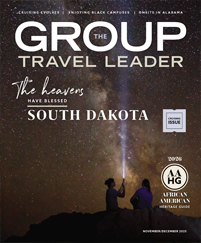What’s the easiest way to level up your trips? Survey says: surveys.
In the travel business, client satisfaction is the most important metric of success. Obtaining feedback about your trips gives you a direct line to your customers’ thoughts and can help you make instant improvements. It tells you what should stay on the itinerary and what should go. But there’s more to post-trip surveys than you think. How should you boost response rates? What format should they take? And how can you use the data?
Here are a few things to consider when crafting and distributing post-trip surveys.
But first, we're The Group Travel Leader, America's leading experts on all things group travel. Check out our Start Here page to find free resources for building a thriving group travel program.
Now, back to the article.
1. Get the Timing Right
Surveys don’t work if your clients don’t fill them out. That’s why timing is everything — if you send them out the moment they board the plane home, surveys are likely to get lost in the shuffle of travelers returning to everyday life. If you wait too long, important details about the trip tend to get lost, and your clients’ memories of the trip fade. Wait a few days to a week before you send out the survey to make sure your clients have had the opportunity to rest following the trip, but don’t wait longer than two weeks. Alternatively, if there’s an opportunity to provide them with the survey on the last leg of the trip (for instance, a long bus ride back to the airport), you can instruct them to complete it then. It may not exactly be a “post-trip” survey, but it will likely have a decent response rate.
2. Digital Versus Print
Both print and digital post-trip surveys have their advantages and may appeal to different types of travelers. If you’re offering the survey to your travelers to fill out on the last leg of your trip, a print survey may ensure the best response rates. However, not everyone wants to take the time to fill one out, especially while they’re preparing to return home from the trip. Physical surveys may appeal more to older travelers or to those who aren’t great with technology. However, digital surveys are significantly easier to send out to travelers following the trip and may have better response rates among younger clients. It can also be easier to extract and analyze digital survey data, especially when using platforms such as Google Forms, SurveyMonkey or even your own CRM software.
3. Mix Up the Question Types
While it may be tempting to simply ask your clients to give their travel experience a thumbs-up or thumbs-down, failing to ask for more specifics on your post-trip surveys is a huge mistake. That’s because you’re missing out on lots of data you could use to make your trips — and your travel business — better. It’s important to ask your travelers a mix of questions to get the most data possible. Rating on a Likert scale is helpful because it it’s easy to extract and analyze numerical data from it. For example, if your trip’s average ranking one year is a seven out of 10, and the following year it’s eight out of 10, that shows measurable improvement. Meanwhile, short-answer questions give you qualitative data to work with and give travelers the opportunity to elaborate further on what they liked and didn’t like. At the end, leave room for a long-form response so your travelers can write down any additional thoughts.
4. Keep it Short
While you want to vary the types of questions you ask, you don’t want to overwhelm your clients with a survey that takes 20 minutes to complete. Keep it relatively short and easy — the whole thing should take no more than 5 minutes to fill out unless the respondent wants to provide extremely detailed comments. If you’re conducting the survey digitally, you also don’t want it to be spread across multiple web pages. Having it on one page ensures that nobody forgets to hit submit at the end or gets sidetracked while they’re waiting for the next page to load.
5. Use the Feedback
Surveys are a waste of time if you’re not going to use the feedback in a meaningful way. If a client leaves you negative feedback, it may be appropriate to follow up with them and see if there’s any way you can make it right. That could include a handwritten apology, a voucher for a discounted trip with you in the future or even a partial refund, if their complaints are significant and have merit. If you receive positive feedback, that can be leveraged as well. Ask the client if you can pull a quote from their survey to use as a testimonial on your website or social media. Additionally, consider if any of your vendors or partners would appreciate the feedback. No matter what, don’t let the feedback go to waste — let it guide your future trip planning so you can repeat what your clients loved and avoid what they didn’t.









